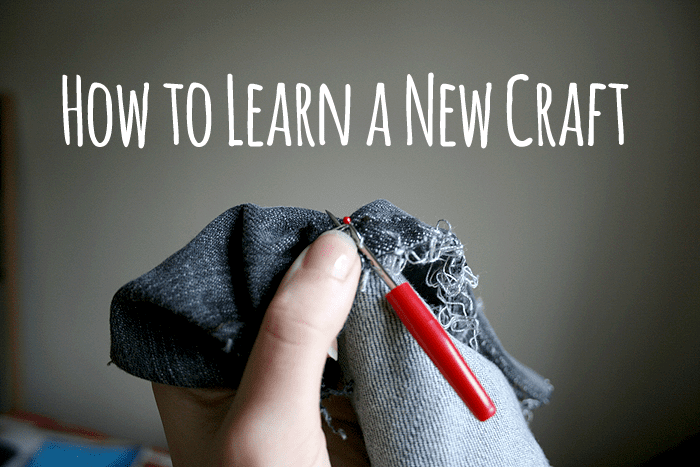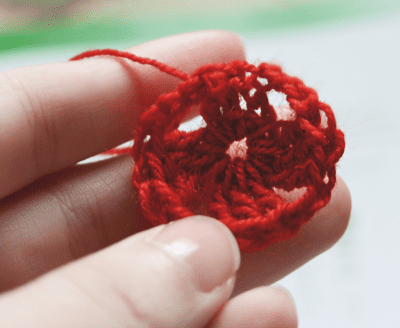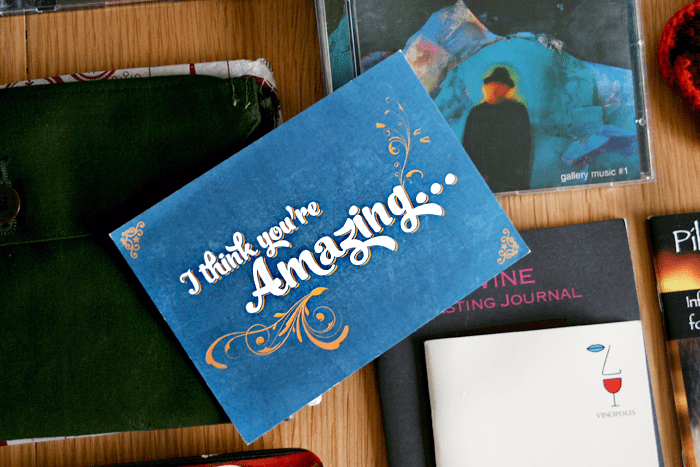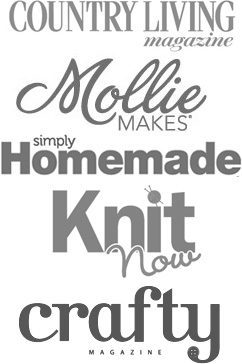How to Learn a New Craft

I’m five crafts into the year. So far I’ve tackled crochet, embroidery, calligraphy, stamp making, and this month fused glass. Tackling new crafts one after the other has helped me fine-tune my process of learning the techniques and putting them to use.
Is it cheesy to say I’m getting good at being a beginner?
[highlight bg=”#2883e2″ color=”#ffffff”]My Process[/highlight]
The process for me each month is to first study the craft. I want to understand the craft, not just follow one tutorial. The origins, development, and professionals using the craft all matter to me.
When I worked with Carys Rodwell to learn about fused glass, the process was a bit different. Crafting with a mentor meant I didn’t have to study as much beforehand. I knew a couple basics, and then she guided me through the rest as we went along. It was very hands on and I loved it!
But you don’t have to study the history of a craft or admire the work of professionals in order to learn! Whether you’re jumping in alone or have a workshop lined up to help you along, here’s a bit of advice to help you learn a new craft:
[highlight bg=”#e43a58″ color=”#ffffff”]Love the craft[/highlight]It seems obvious, but pick a craft you love the results of. To get through the frustrations of learning (they are always there!) it helps to love the results you can get from that craft. I got better at knitting because I love knitted handwarmers and scarves, especially lacy ones in summer and chunky cabled ones in winter.
If you’re not going to make something you enjoy, you won’t be committed to learning it. And yes, this matters even if you’re crafting to make gifts!

My first piece of crochet was just one granny square. Just one! I practised the Foundational Hand alphabet when I was learning calligraphy, one letter at a time. My fused glass project was a set of two simple glass coasters.
It’s better to build up to a bigger project than to jump right in. That way, you have more control over mistakes and improve quicker.
[highlight bg=”#38b5cc” color=”#ffffff”]Prepare for mistakes[/highlight]No matter how much you plan, you can’t prevent all mistakes. It’s just impossible, and in fact, it’d be a bit silly. If you’re not doing something wrong, how can you learn to fix it and do it right?
The way to go about it is to plan for those mistakes. When you know you’re going to mess up (drop stitches, stamp the wrong thing, measure incorrectly, prick your fingers …) it’s not as big a deal. It’s just part of the schedule.
[highlight bg=”#2883e2″ color=”#ffffff”]Find support[/highlight]
Support when you learn a new craft can come in many forms. I’ve found my support from my family and on Twitter, and I recently joined a local crafting group. I’ve said it before: validation is important. Even if your support can’t actually help with the craft, knowing you have someone to rant to about sore fingers is a good morale booster.
The easiest way to get support? Just reach out! Say you’re going to learn something new, and if someone wants to help they can step in.
And then there are always Youtube tutorials. ;)
[highlight bg=”#e4b23a” color=”#ffffff”]Work out the cost[/highlight]One of the biggest surprises has been that learning crafts doesn’t have to be expensive. But before you start learning, make sure you have an idea of what it’ll cost. Unplanned costs can be a bit of a bummer! It’s not nice to buy a knitted throw pattern without knowing the yarn involved would cost £75, or that the £200 sewing course you’ve booked doesn’t include materials or a sewing machine.
[divider top=”0″]
In crafty news, Sue Bulmer has interviewed me on her blog about my Crafting Fingers project. Read it here to hear more about the creative rut that inspired this blog and what this project has been like so far.
![]() Pushing boundaries isn’t easy. Every month so far I have chosen a craft I’ve wanted to learn for years. There are literally years of excuses to get over. I’m fighting against a backlog of preconceived ideas of what the craft will be like and what I’ll be able to achieve. ”
Pushing boundaries isn’t easy. Every month so far I have chosen a craft I’ve wanted to learn for years. There are literally years of excuses to get over. I’m fighting against a backlog of preconceived ideas of what the craft will be like and what I’ll be able to achieve. ”
All the best,
![]()













I love that you’re learning a new craft a month. It’s awesome. I’m also one of those people who wants to learn all the things. You’re inspirational
Thank you! If anyone had told me just seven months ago that I would be deep into this project I would’ve laughed. Me, doing so much crafting? In my dreams! So glad it’s inspiring for you, that’s why I’m sharing my journey with others. :)
You are very much an inspiration, Anna! Reading about your journey of trying new crafts has been so informative. There are many things that I would like to try and there are times when fear of failure holds me back. Reading your stories has made me a little more adventurous. Thanks for sharing!